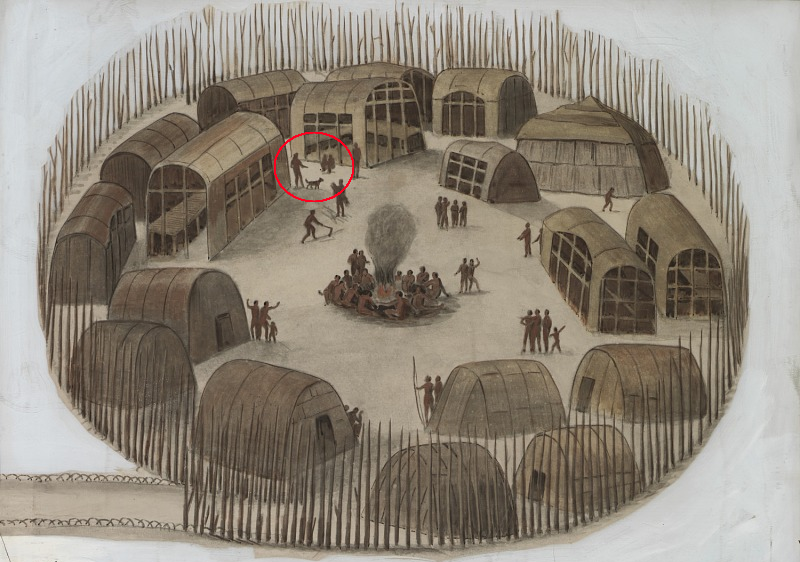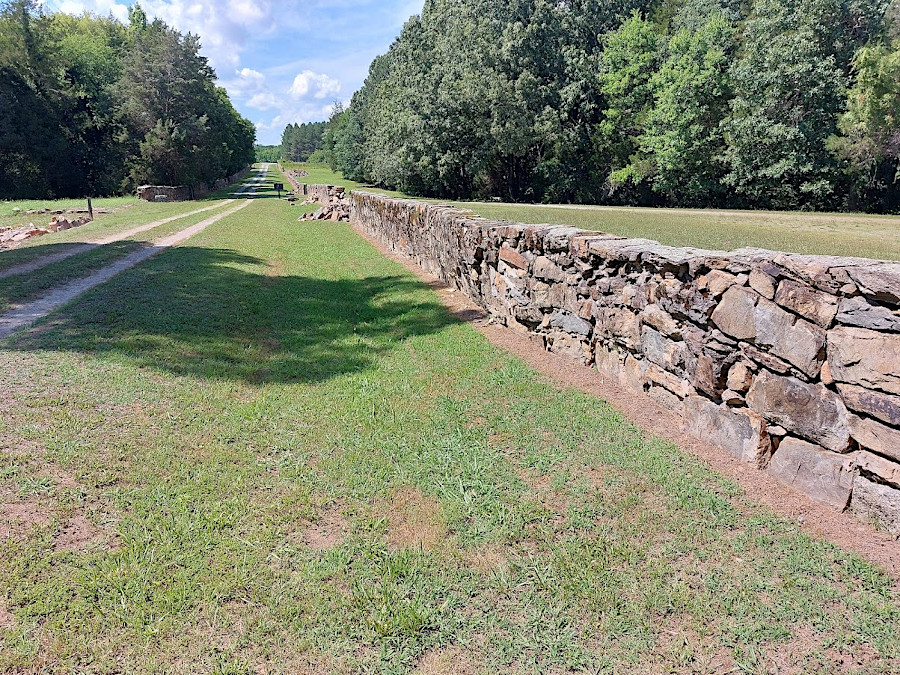
Native Americans had domesticated dogs, as shown in a reproduction of a 1585 watercolor by John White
Source: Smithsonian Institution, The Town of Pomeiock (by Spencer Nichols, 1985)
The first fences built in Virginia were designed to control the movement of domesticated animals.
The only fences built by Native Americans before European colonization were associated with palisades around towns. Those barriers were designed to slow down enemies who might attack the town, and potentially to keep out wild animals which might raid the food stores.
The Algonquian-speaking, Siouan-speaking, and Iroquoian-speaking groups had no domesticated fowl or livestock, so they had no need for fences. Native Americans in Virginia kept only domesticated dogs in their towns before Europeans arrived.1

Native Americans had domesticated dogs, as shown in a reproduction of a 1585 watercolor by John White
Source: Smithsonian Institution, The Town of Pomeiock (by Spencer Nichols, 1985)
Spanish explorer Hernando de Soto brought horses and pigs to what is now North Carolina in 1540, but the Jesuits who came to what is now Virginia to start the first European settlement in 1570 apparently brought no animals. Spanish colonies in Florida, Georgia, and South Carolina did import domesticated animals, so they constructed the first fences to manage fowl and livestock in North America.
In Virginia, the first domesticated chickens, ducks, geese, cattle, sheep, pigs, and horses arrived with the colonists who settled at Jamestown. The first horses were imported in 1609, and they did not last through the Starving Time in the winter of 1609-1610.2
Fences were needed to keep animals out of the gardens and fields planted in corn and wheat. Though none of the domesticated animals grazed on tobacco, they could get into the fields and trample the valuable plants.
Under English common law, the owner of an animal was required to keep away from the crops and gardens of others. One technique was to put animals on an island; that may be the origen of the Chincoteague ponies. Another technique was to fence in a peninsula, giving cattle, horses, sheep, and pigs plenty of grazing opportunity while minimizing the labor and materials required to build an enclosure.
The Virginia General Assembly adopted a new approach in 1643. Instead of requiring the owner of livestock to fence in their pasture, the legislature made the colony into "open range." Livestock could wander at will. Farmers growing crops and homeowners with gardens had to build adequate protective fences. The definition of an adequate fence was made clear three years later, and included being 4.5 feet high.
In 1862, Civil War soldiers had used many fence rails for firewood. The General Assembly meeting in Richmond revised the open range law, and gave local county officials the authority to require livestock owners to fence in their animals. Some counties chose to adopt a "fence in" approach, while others retained the old "fence out" requirements.3 A British officer was a prisoner to Charlottesville in 1779. He described the fences in Virginia, and how they differed from fences seen on his trip from Massachusetts:2

the amount of labor required to construct the stone fence leading up the entryway to Prestwould Plantation demonstrated wealth